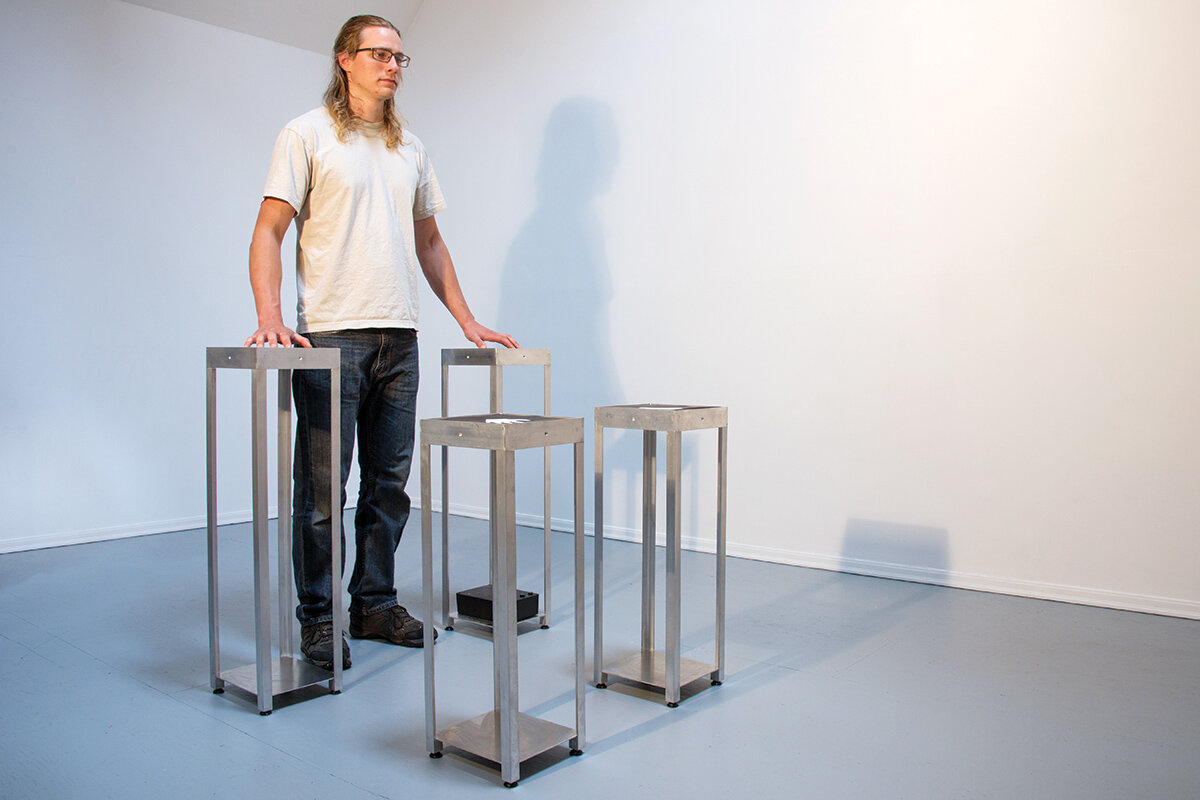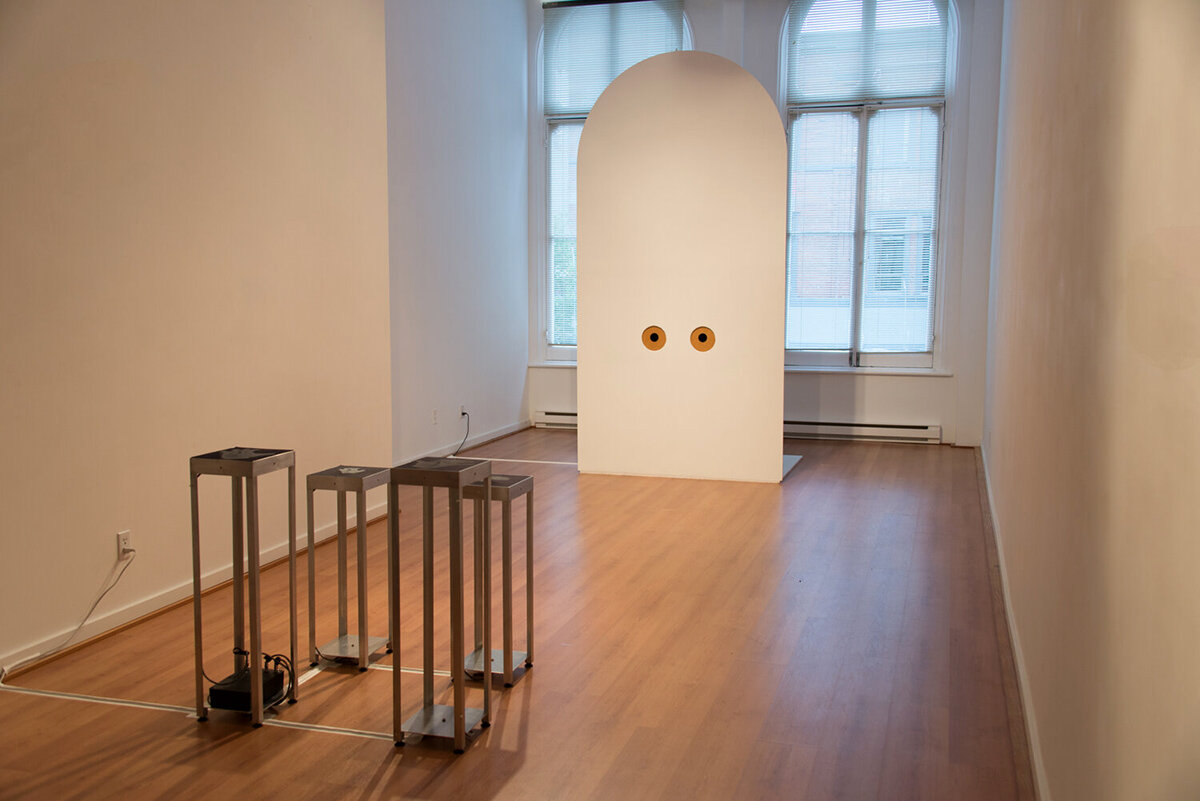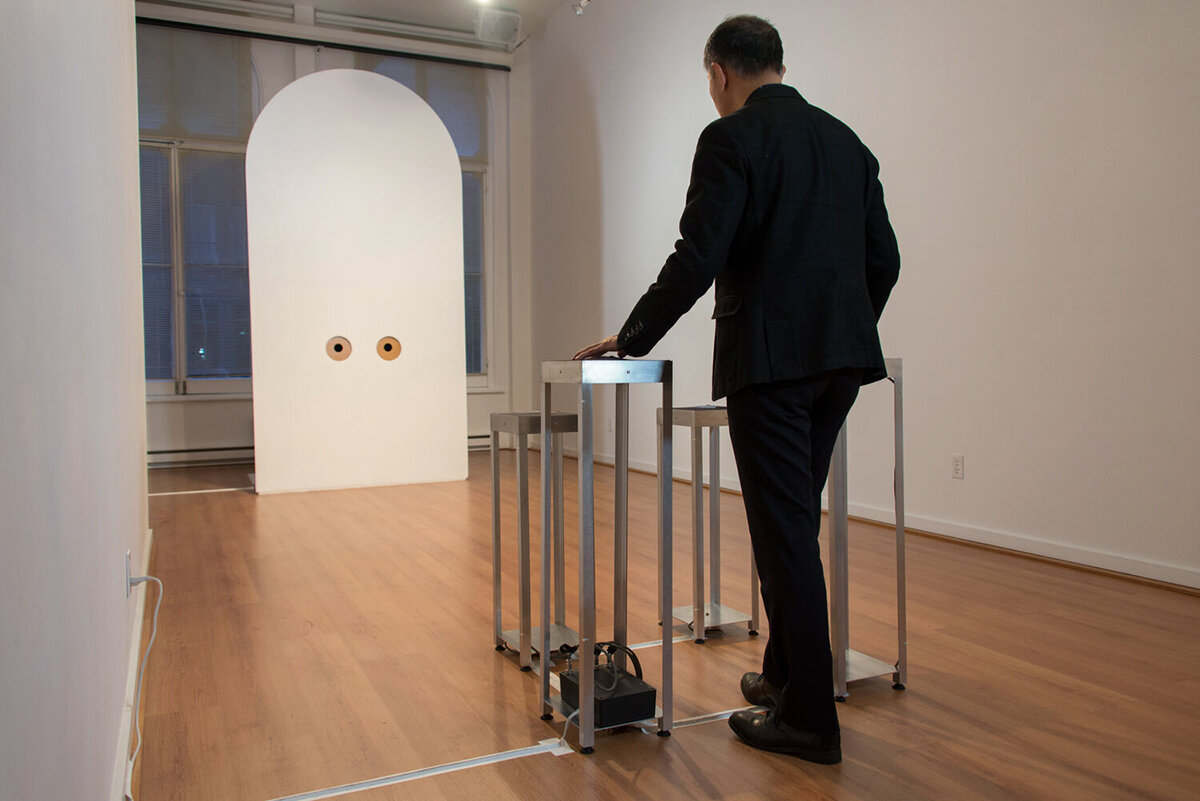


Toroidal Yodel
Mowry Baden
September 9 to October 8, 2016
Toroidal Yodel is an extension of Mowry Baden’s ongoing interest in haptic sculpture. “I am not interested in haptic sculptures that are merely extensions of visual scenarios,” Baden has stated, “and I don’t want to burden the viewer with any exotic conditions. I want the viewer to experience the sculpture as directly as possible.” Toroidal Yodel is a work in which Baden has employed vortices—torus-like (or donut-shaped) slugs of air that swirl around a trans-spacial axis—to hurl palpable but invisible donuts of air at people interacting with it. Because the number, direction and velocity of these air slugs can be controlled via computer, the technology has provided the artist vast opportunities for experimentation. Describing each moving torus as a “micro event,” Baden has imagined a “program of micro events as long as a sonata.”
According to Baden,“We are never passive receivers. Coupled with its sensory extensions, the brain is always in a predictive mode. The skin has thousands of receptors that link to the brain. This suggests a one-way flow of information. But in reality, the brain is continuously positing scenarios and does so with sufficient force to confirm, and at times override, sensory data. When we experience turbulence in the meeting of these two forces, we call the experience an illusion or a phantom.”
Baden’s Toroidal Yodel has harnessed new ways to stimulate our sense of touch—a particularly illusion-free sensory channel—to allow phantoms to inhabit it.
Born in Los Angeles in 1936 and educated at Pomona College and Stanford University, Mowry Baden has lived and worked in Canada since 1971. He has practiced sculpture for over 50 years and has taught sculpture at Raymond College, Pomona College, UBC and the University of Victoria, from which he retired in 1997.
Articulating an internal awareness of movement has always been the most important element in his work. In the course of his practice, he has developed various methods of de-emphasizing vision and interfering with habitual human gestures. He has built harnesses, furniture, rooms, pathways and catwalks, all with the goal of impinging upon the viewer’s movements and awakening a physical self-awareness that was previously unconscious.
Baden tries to provoke a perceptual crisis that assaults the viewer’s confidence in the information that comes through the senses. His practice has always involved materials, just like any artist who makes objects. Ideally, however, he is less interested in the object than in the experience. He wants the viewer to enter the object (or the space) and have an experience that is visceral, internal and sensorially cross-circuited.